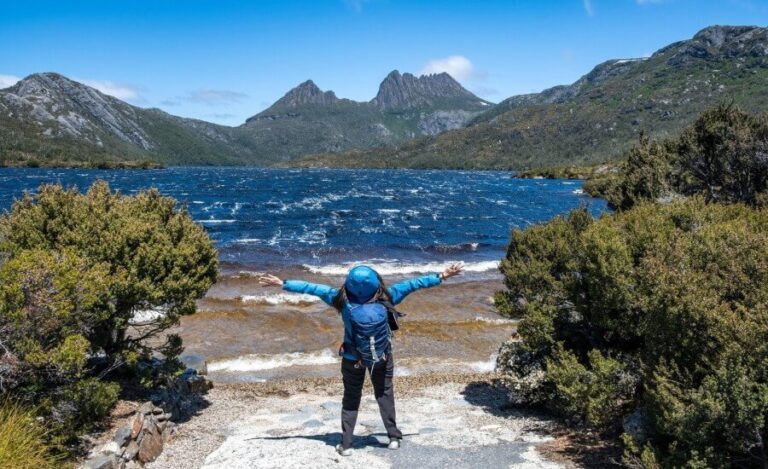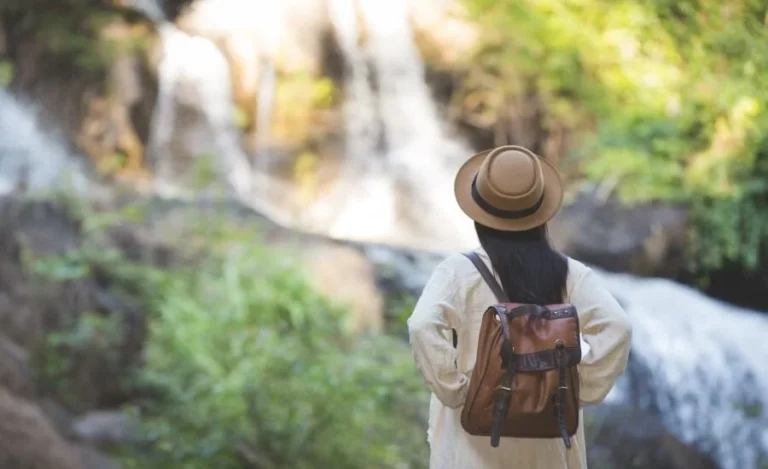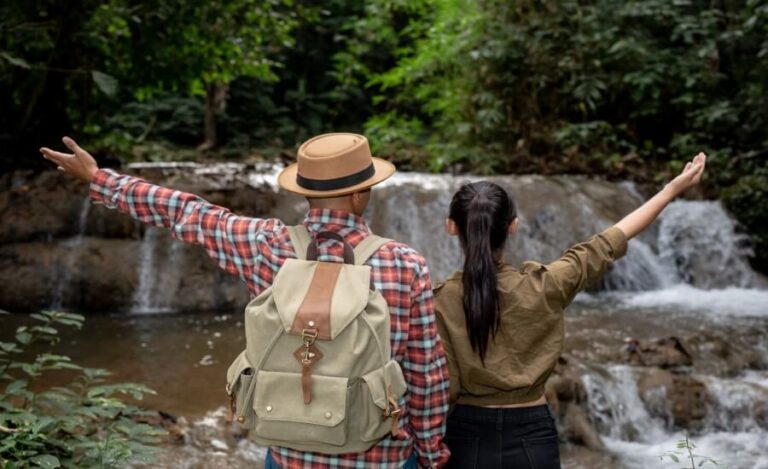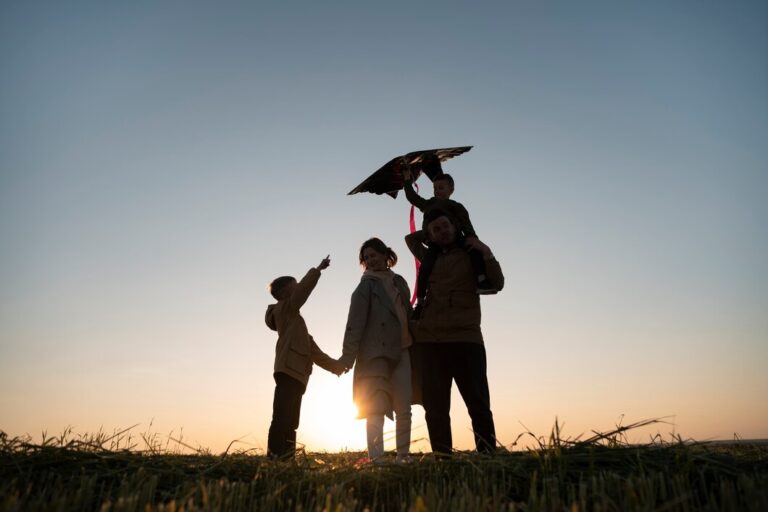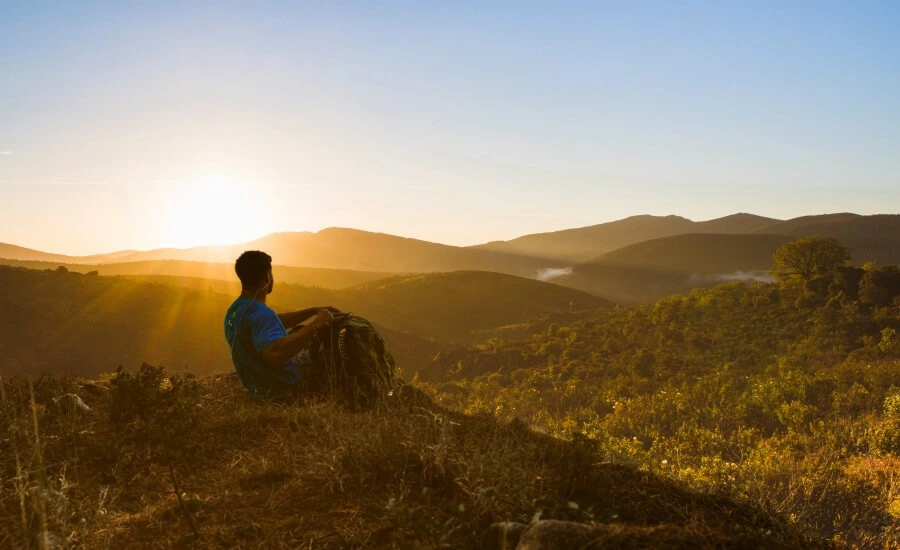
There’s a unique magic in the moments when the day begins and ends. Imagine the pre-dawn hush, a cool stillness in the air, broken only by the first birdsong as the eastern horizon begins to blush. Or picture the end of the day, when the sun dips low, painting the clouds in fiery strokes of orange, pink, and gold before surrendering to the soft velvet of twilight. These moments – sunrise and sunset – are nature’s greatest spectacles, offered daily, universally. And contrary to popular belief, witnessing these epic views doesn’t require expensive tours or luxury resorts. It requires intention, a little planning, and a spirit of adventure – all perfectly achievable on a budget.
Too often, we associate breathtaking vistas with high price tags – rooftop bars, exclusive resorts, guided excursions. But the truth is, the sky’s most stunning performances are free to all who seek them. This guide is dedicated to empowering you, the budget-conscious traveler and nature lover, to experience the profound beauty of the golden hours without emptying your wallet. You will learn practical strategies for Sunrise to Sunset: Chasing Epic Views on a Budget, uncovering tips for finding accessible viewpoints, planning your quest, and most importantly, savoring the experience itself. Prepare to discover that the most valuable views often cost nothing but your time and attention.
The Allure of the Golden Hour: Why We Chase the Light

What is it about the transition between night and day, day and night, that captivates us so profoundly? Chasing sunrises and sunsets is more than just seeking a pretty picture; it taps into something deep within the human spirit. It’s about witnessing raw, unfiltered beauty and connecting with the natural rhythms of our planet.
Sunrise holds the promise of a fresh start. There’s a unique tranquility in the early morning hours, a quiet before the world fully awakens. Watching the sun climb above the horizon can feel like a personal moment of renewal, instilling a sense of peace and optimism for the day ahead. The air often feels cleaner, the sounds crisper – a sensory experience often lost in the bustle of midday. Have you ever felt that specific calm that only exists just before dawn?
Sunset, conversely, offers a time for reflection. As the day winds down, the warm, soft light creates a contemplative atmosphere. It’s a natural pause, encouraging us to slow down, breathe, and appreciate the beauty around us. Watching the colors shift and fade can be a meditative experience, a gentle release from the day’s stresses. It’s nature’s lullaby, easing us toward rest.
For photographers and artists, these “golden hours” – the period shortly after sunrise and before sunset – are legendary. The low angle of the sun casts long shadows, reveals textures, and bathes the landscape in a warm, diffused light that is incredibly flattering and evocative. But you don’t need a camera to appreciate this magic. The sheer aesthetic beauty – the vibrant, ever-changing palette splashed across the sky – is a powerful draw in itself. It’s a reminder of the artistry inherent in the natural world, a spectacle that dwarfs any human creation. Chasing these moments is chasing awe, wonder, and a connection to something larger than ourselves.
Key Motivations:
- Profound Beauty: Experiencing nature’s daily masterpiece of color and light.
- Peace & Tranquility: Finding moments of calm and stillness at the day’s edges.
- Renewal & Reflection: Connecting with feelings of fresh starts (sunrise) or mindful closure (sunset).
- Connection to Nature: Aligning with the planet’s natural rhythms.
- Photographic Magic: Capitalizing on the unique qualities of golden hour light.
Sunrise to Sunset: Chasing Epic Views on a Budget
The core of chasing epic views affordably lies in resourcefulness and looking beyond the obvious, often costly, options. Experiencing Sunrise to Sunset: Chasing Epic Views on a Budget means becoming a savvy explorer, utilizing free resources, and shifting your perspective on what constitutes a “prime” viewing spot. Often, the most rewarding vistas are those you discover yourself, away from the crowds.
Look Beyond the Label
Finding Unofficial Gems Many towns and natural areas have designated “scenic overlooks” which sometimes come with parking fees or are attached to pricey restaurants. Think outside these prescribed spots.
- Local High Points: Use online maps (Google Maps terrain view, local topographic maps) to identify nearby hills, ridges, or even small rises on the edge of town. A little elevation can make a huge difference.
- Public Parks: City or county parks often have hidden corners with surprisingly good views, especially those built on varied terrain. Explore beyond the playgrounds and picnic areas.
- Waterside Wonders: Beaches, lake shores, and riverbanks (especially those facing east or west) offer unobstructed horizons. Public access points are usually free.
- Ask Locals: Engage with residents! Ask cafe staff, shopkeepers, or people you meet where they go to watch the sunrise or sunset. You might uncover a cherished local secret.
Leverage Public Lands & Trails
Vast networks of public lands offer incredible viewing opportunities for minimal cost.
- National/State/Provincial Parks: While main entrances often have fees, many parks have extensive trail networks accessible from secondary points, or simple roadside pull-offs with great views. Check park websites for maps and access details. Sometimes arriving very early (for sunrise) or staying late (for sunset) means entrance stations are unmanned (verify park rules!).
- National Forests & BLM Land (USA): These often have fewer restrictions and fees than National Parks, offering vast areas to explore, hike, and find secluded viewpoints. Dispersed camping might even be an option for overnight viewing quests.
- Hiking Trails: Even short, easy trails can lead to rewarding overlooks. Look for trails marked “vista,” “overlook,” or those climbing ridges. Websites like AllTrails (use the free version) can help identify potential routes.
Urban Vistas for Free
You don’t need to leave the city to find great sunrise/sunset spots.
- Bridges: Pedestrian walkways on bridges often provide panoramic city skyline or water views.
- Public Libraries/Buildings: Some public buildings have upper floors or accessible rooftops with unexpected perspectives (check rules and opening hours).
- Riverfronts/Promenades: Many cities have developed riverfront or lakefront paths perfect for watching the light change over the water and skyline.
- Hilltop Parks: Cities built on hills often have parks offering commanding views. Think Arthur’s Seat in Edinburgh or Twin Peaks in San Francisco (accessible for free!).
- Parking Garages: Sometimes, the top level of a centrally located (often public or university) parking garage offers surprisingly excellent, elevated views (be mindful of access rules and safety).
The key is curiosity and exploration. Don’t just follow the signposts for “Scenic View.” Look at maps, wander a little, and be open to discovering beauty in unexpected places. The best view is often the one you earned.
Orchestrating the Spectacle: Planning Your Budget View Quest
While spontaneity has its charm, a little planning significantly increases your chances of catching that truly epic sunrise or sunset, especially when you’re on a budget and relying on free or low-cost options. Smart preparation ensures you’re in the right place at the right time, comfortably and safely.
Timing is Everything (Literally): Sunrises and sunsets aren’t instantaneous events; they are processes with distinct phases.
- Pinpoint the Time: Don’t just guess. Use reliable sources to find the exact sunrise/sunset time for your specific location and date. Websites like TimeAndDate.com or various free weather apps (AccuWeather, Weather Channel app) provide this.
- Factor in Twilight: The magic often happens before sunrise and after sunset during twilight (civil, nautical, astronomical). Aim to arrive at your chosen spot at least 20-30 minutes before sunrise and plan to stay 20-30 minutes after sunset to witness the full spectrum of colors.
- Account for Travel Time: Calculate how long it will take to reach your viewpoint (walking, driving, public transport) and add buffer time, especially for navigating in the dark (for sunrise) or finding your way back (after sunset).
Weather Wisdom: The weather plays a crucial role in the quality of the light show.
- Check the Forecast: Use reliable weather apps or websites shortly before heading out. Pay attention to cloud cover predictions. A completely clear sky can be less dramatic than one with some high-altitude clouds to catch the light. Heavy, low clouds might obscure the view entirely.
- Be Prepared for Anything: Mountain weather, coastal weather – it can change rapidly. Pack accordingly, even if the forecast looks clear.
- Embrace Imperfection: Sometimes a slightly moody or stormy sky produces the most dramatic and unique sunsets. Don’t be discouraged by less-than-perfect conditions (unless safety is a concern, like lightning).
Packing Smart (and Light): Comfort is key to enjoying the moment.
- Layers, Layers, Layers: Temperatures can drop significantly before dawn and after dusk, even on warm days. Pack layers you can easily add or remove (e.g., t-shirt, fleece, wind/rain jacket).
- Headlamp or Flashlight: Absolutely essential for navigating in the dark for sunrise quests or finding your way back after sunset. A headlamp keeps your hands free. Check the batteries!
- Water & Warm Drinks: Stay hydrated. A thermos filled with hot tea, coffee, or cocoa is a welcome, budget-friendly treat, especially on chilly mornings or evenings.
- Sit-Upon: A small foam pad or folded blanket makes sitting on rocks or damp ground much more comfortable.
Safety First: Early mornings and late evenings require extra awareness.
- Inform Someone: Let a friend, family member, or accommodation host know where you are going and when you expect to be back.
- Know Your Route: Familiarize yourself with the path beforehand if possible, especially if hiking. Use offline maps if cell service is unreliable.
- Be Aware of Wildlife: Especially in natural areas, be aware of potential wildlife activity during dawn and dusk hours.
- Go with a Buddy: If possible, especially in more remote or urban areas you’re unsure about, sharing the experience enhances safety.
A little foresight transforms your quest from a hopeful gamble into a well-orchestrated (and likely successful) mission to witness nature’s splendor. What’s one planning step you often overlook?
The Budget Viewfinder’s Toolkit: Gear for the Golden Hour
Chasing epic views on a budget doesn’t require a backpack full of expensive equipment. The focus should be on experiencing the moment, but a few simple, affordable tools can enhance your comfort and help you capture a memory if you wish, without breaking the bank.
Your Capture Device (Keep it Simple):
- Smartphone Camera: Honestly, modern smartphone cameras are incredibly capable, especially in good light. Learn its basic functions (focus lock, exposure adjustment). That’s likely all you need!
- (Optional) Basic Camera: If you have an old point-and-shoot or an entry-level DSLR/mirrorless camera, great! But don’t feel pressured to buy one just for this. The best camera is the one you have (and know how to use).
- Forget the Drone (for Budget): Drones are expensive, often regulated, and can detract from the peaceful experience for yourself and others. Stick to ground-level perspectives.
Achieving Stability (No Shakes!): Low light at sunrise/sunset makes camera shake more noticeable.
- Mini Tripod/GorillaPod: Small, lightweight tripods for phones or cameras can be found very cheaply online. They make a huge difference for sharper photos and allow you to be in the photo using a timer.
- Natural Stabilizers: Get creative! Use a rock, a fence post, your backpack placed on a ledge, or lean against a tree to steady your shot. It’s free!
Comfort Enhancers:
- Sit-Pad or Small Blanket: As mentioned in planning, this small item significantly boosts comfort while waiting for the light show. Easily packable and often inexpensive.
- Hand Warmers: For cold climates, reusable or disposable hand warmers can be a lifesaver and cost very little.
Sustenance Savings:
- Thermos: Pack your own hot coffee, tea, or soup. Avoids paying inflated prices at viewpoint cafes (if any exist).
- Snacks: Bring granola bars, fruit, nuts, or a sandwich. Enjoying a simple picnic while watching the sunset is far more rewarding (and cheaper) than a fancy restaurant meal with a view.
- Reusable Water Bottle: Essential for staying hydrated.
Navigation Aids:
- Free Offline Map Apps: Apps like Maps.me or Organic Maps allow you to download maps for offline use, crucial if you lose cell signal. Plot your viewpoint and route beforehand.
- (Optional) Basic Compass: A simple, inexpensive compass can be a useful backup, especially if hiking in less-marked areas.
- Paper Map/Printout: Old school, but reliable! Print a map of the area as a failsafe.
The goal isn’t to be laden with gear, but to have a few key items that maximize comfort and opportunity while minimizing cost and fuss. Prioritize items that help you stay longer and enjoy the experience more fully. What’s your must-have budget item for watching a sunrise or sunset?
Beyond the Lens: Savoring the Unfiltered Moment

In our eagerness to capture the beauty of a sunrise or sunset, it’s easy to spend the entire time viewing it through a screen or viewfinder. We meticulously frame shots, adjust settings, take dozens of photos, and risk missing the very essence of the experience. While capturing a memory is fine, the real reward lies in putting the technology down and immersing yourself fully in the present moment.
Challenge yourself: Once you’ve taken a few photos (or maybe even before!), consciously put your phone or camera away. Find a comfortable spot, take a deep breath, and simply watch. Engage all your senses:
- See: Notice the subtle shifts in color, the way the light interacts with clouds or landscapes, the emergence of stars or the fading of shadows. Look around you, not just at the main event.
- Hear: Listen to the sounds of nature awakening (sunrise) or settling down (sunset). Birds, insects, the rustle of leaves, the distant city hum, or perhaps profound silence.
- Feel: Experience the changing temperature on your skin, the breeze, the texture of the ground beneath you.
- Smell: Notice the scent of damp earth in the morning, flowers, pine trees, salty sea air, or evening woodsmoke.
This sensory immersion anchors you in the present. Instead of mentally curating your future Instagram post, you are living the experience. Consider these tech-free ways to deepen your connection:
- Mindful Observation: Simply sit and observe without judgment or the need to label everything. Let the colors wash over you. Notice thoughts arise and pass without engaging them.
- Journaling: Describe the scene using sensory details. How does the light feel? What emotions does the view evoke? What thoughts come to mind? This creates a richer, more personal memory than a photo alone.
- Sketching: Even a simple, quick sketch can capture the essence of the landscape and light in a way that forces close observation. Don’t worry about perfection; focus on the act of looking and translating.
- Sharing Silently: If you’re with others, resist the urge to constantly narrate. Share a look, a smile, or simply sit together in comfortable silence, appreciating the shared experience.
The most epic view isn’t just about what you see; it’s about how you feel. It’s the sense of awe, peace, gratitude, or connection that stays with you long after the colors fade. By prioritizing presence over documentation, you allow the moment to imprint itself not just on a memory card, but on your soul. How much of the last beautiful sunset did you truly experience outside of your camera lens?
Common Concerns & Solutions for Budget View Chasers

Embarking on a budget quest for sunrises and sunsets can bring up valid concerns. Anticipating these and having simple, low-cost solutions ready can make the difference between a hesitant attempt and a confident adventure.
- Concern: “All the ‘famous’ viewpoints seem to have entry fees, expensive parking, or require tours.”
- Solution: Research is your superpower! Use online resources (local blogs, hiking forums, park websites, Google Maps satellite/terrain view) to find free alternatives. Look for public lands, accessible trailheads away from main entrances, and local recommendations. Often, a spot just near the famous viewpoint offers a similar vista for free. Think laterally!
- Concern: “Is it safe to be hiking or exploring unfamiliar areas in the dark (early morning/late evening)?”
- Solution: Prioritize safety. Start with well-known, relatively populated spots. Go with a friend if possible. Always tell someone your exact plans and expected return time. Carry a fully charged phone (for emergency calls/GPS backup), a reliable headlamp/flashlight, and perhaps a whistle. Trust your intuition – if an area feels unsafe, leave. Safety doesn’t have to cost money, just awareness.
- Concern: “I don’t have a car – how can I reach good viewpoints affordably?”
- Solution: Explore public transport + foot power! Check local bus or train routes that might get you close to a park entrance or a trailhead. Look for viewpoints accessible directly from town via walking paths or bridges. Consider ride-sharing for the final leg if necessary, or focus on urban viewpoints initially. Limited transport forces creativity!
- Concern: “Getting up super early for sunrise or staying out late for sunset is difficult/disrupts my sleep/plans.”
- Solution: Treat it like a special event. Adjust your sleep schedule slightly the day before if needed. Prepare everything the night before (clothes, snacks, gear) so you can just get up and go. Start with a sunset quest first, as it requires less disruption. Remind yourself of the reward – the unique beauty and tranquility. Is the experience worth one early morning? Likely yes!
- Concern: “What if I go to all the effort and the weather is terrible?”
- Solution: Manage expectations and have backups. Check the forecast religiously before committing. Sometimes, dramatic clouds make for better photos/views than clear skies, so don’t dismiss it immediately (unless unsafe). If it’s truly a washout, have a cozy indoor backup plan (cafe, museum) or simply try again another day. Flexibility is a budget traveler’s best friend.
Facing these concerns with practical, low-cost strategies makes the goal feel much more attainable. It’s about resourcefulness, planning, and a willingness to adapt.
Before You Go: Budget Golden Hour Checklist
A little prep ensures your budget sunrise or sunset adventure goes smoothly, safely, and successfully. Tick off these items before you head out:
- Research Viewpoint(s): Identify 1-2 potential free or low-cost spots using maps, local blogs, park info. Have a backup.
- Check Timings: Note exact sunrise/sunset time AND civil twilight times for your specific location and date.
- Check Weather Forecast: Look at cloud cover, temperature, wind, and precipitation predictions.
- Plan Transport: Figure out how you’ll get there and back affordably (walking, public transport schedule, driving route/parking). Calculate travel time + buffer.
- Pack Layers: Dress appropriately for the likely temperature range (cool mornings/evenings). Include a hat and gloves if needed.
- Pack Essentials: Headlamp/flashlight (checked batteries!), water bottle, thermos with hot/cold drink, energy-boosting snacks.
- Charge Phone: Ensure your phone is fully charged for navigation backup, emergency calls, and maybe a few photos. Consider a portable power bank if needed.
- Navigation Ready: Download offline maps if necessary, or have your physical map/printout handy. Know your route.
- Inform Someone: Let a friend/family member know your specific location and estimated return time.
- Gear Check: Camera/phone ready (if taking photos), mini-tripod (if using), journal/sketchbook packed.
- (Optional) Cash: Have a small amount of cash for unexpected bus fare, parking meters, or a celebratory coffee afterwards.
- Mindset Check: Set your intention to enjoy the experience, be present, and appreciate the effort regardless of the “perfect” view.
With these preparations handled, you can focus less on logistics and more on the magic unfolding in the sky.
Conclusion: The Richest Views Have No Price Tag

The pursuit of Sunrise to Sunset: Chasing Epic Views on a Budget is ultimately a journey back to basics. It reminds us that the most profound and awe-inspiring experiences often lie outside the realm of commerce. The daily spectacle of the sun greeting and retreating from the earth is a universal gift, accessible to anyone willing to seek it out with a little planning and an open heart.
Trading expensive guided tours for map exploration, swapping pricey viewpoint cafes for a thermos of hot tea shared with a friend (or in peaceful solitude), and choosing presence over frantic picture-taking – these aren’t sacrifices; they are choices that often lead to richer, more authentic experiences. You discover hidden corners of your world, build confidence in your resourcefulness, and connect more deeply with the natural environment. The satisfaction of finding your own perfect spot, free from crowds and costs, is a reward in itself.
The beauty of a sunrise isn’t diminished by the lack of an entry fee, nor is a sunset less spectacular because you watched it from a public park instead of a five-star balcony. The real value lies in the moment itself – the colors, the light, the feeling of peace or wonder it evokes within you.
So, accept the challenge. Look up the sunrise time for tomorrow. Find a local hill, bridge, or east-facing park on a map. Pack a thermos tonight. Go chase the light. Discover the incredible wealth of beauty available to you, completely free of charge. The sky is putting on a show – don’t miss it.



